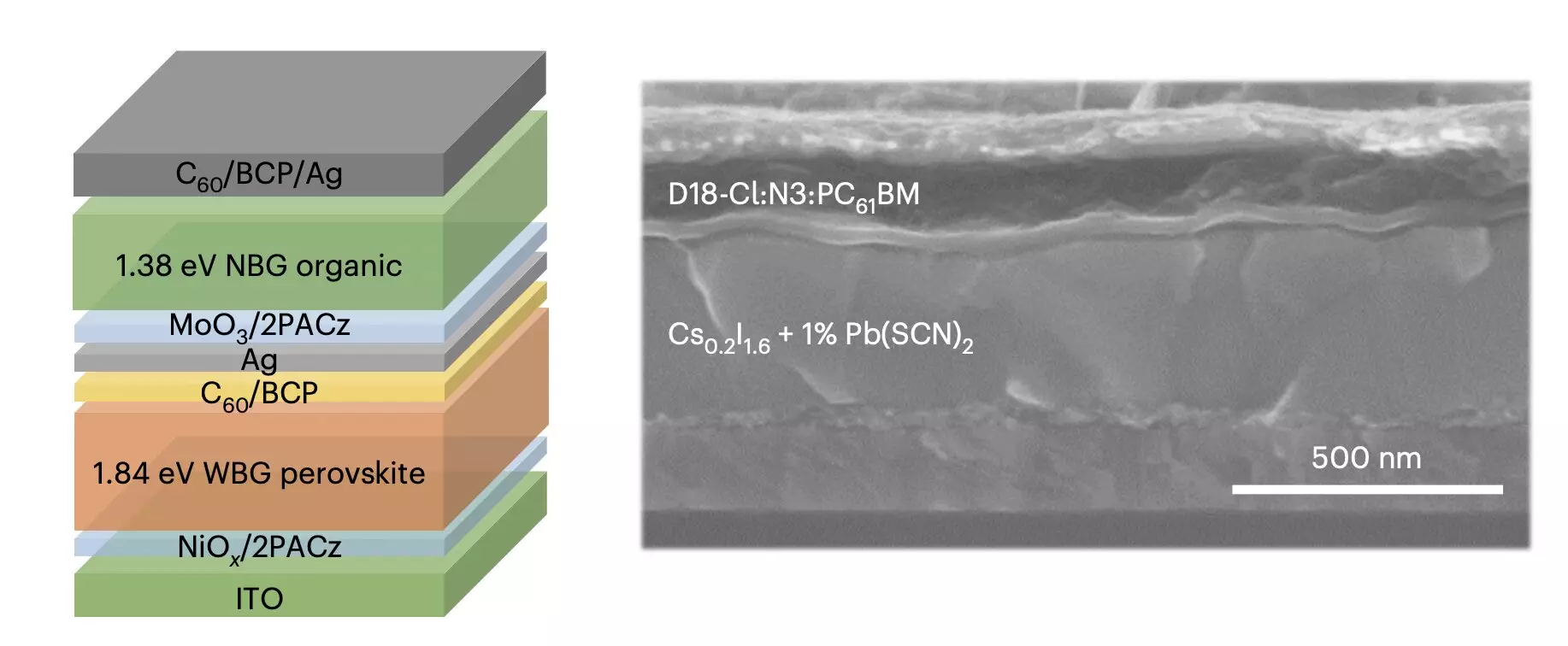Solar energy is becoming an increasingly popular source of renewable energy, and researchers have been constantly looking for new ways to improve the efficiency and stability of solar cells. One of the recent advancements in this field is the development of perovskite materials for use in organic solar cells. While perovskite-based solar cells have shown great potential in terms of cost-effectiveness, flexibility, and tunability, their efficiency still lags behind silicon-based solar cells. However, a new strategy has been proposed to boost the efficiency and stability of perovskite/organic tandem solar cells by suppressing phase segregation in wide-bandgap perovskites.
One of the major challenges faced by researchers working on perovskite/organic tandem solar cells is the phenomenon of phase segregation in wide-bandgap perovskites. This process, caused by halogen vacancy-assisted ion migration, limits the efficiency and stability of the solar cells. The team of researchers at Soochow University’s Suzhou Key Laboratory of Novel Semiconductor-optoelectronic materials and devices has identified this as a key issue that needs to be addressed in order to improve the performance of perovskite/organic tandem solar cells.
In a groundbreaking study published in Nature Energy, Zhichao Zhang, Weijie Chen, and their collaborators introduced a novel strategy to suppress phase segregation in wide-bandgap perovskites. By incorporating a pseudo-triple-halide alloy into iodine/bromide mixed halide perovskites, they were able to enhance crystallization and reduce grain boundaries in the material. This alloy, consisting of pseudo-halogen thiocyanate (SCN) ions, effectively prevented halide elements from separating inside the solar cells, thus improving the movement of electric charge in the material.
The researchers conducted tests to evaluate the effectiveness of their strategy in suppressing phase segregation in wide-bandgap perovskites. They applied this strategy to the development of perovskite/organic tandem solar cells and observed promising results. The tandem solar cells achieved a peak power conversion efficiency (PCE) of 25.82%, a certified PCE of 25.06%, and an operational stability of 1,000 hours. These results demonstrate the potential of the pseudo-triple-halide alloy strategy in enhancing the performance and stability of perovskite/organic tandem solar cells.
Moving forward, the methodology introduced by Zhang, Chen, and their collaborators could pave the way for the development of more efficient and stable perovskite-based solar cells. By adapting this strategy to a wider range of wide-bandgap perovskites with different compositions, researchers could unlock new possibilities for the advancement of photovoltaic technology. Ultimately, this could lead to the creation of highly efficient and durable solar cells that can operate effectively under varying light intensities for extended periods of time.


Leave a Reply
You must be logged in to post a comment.